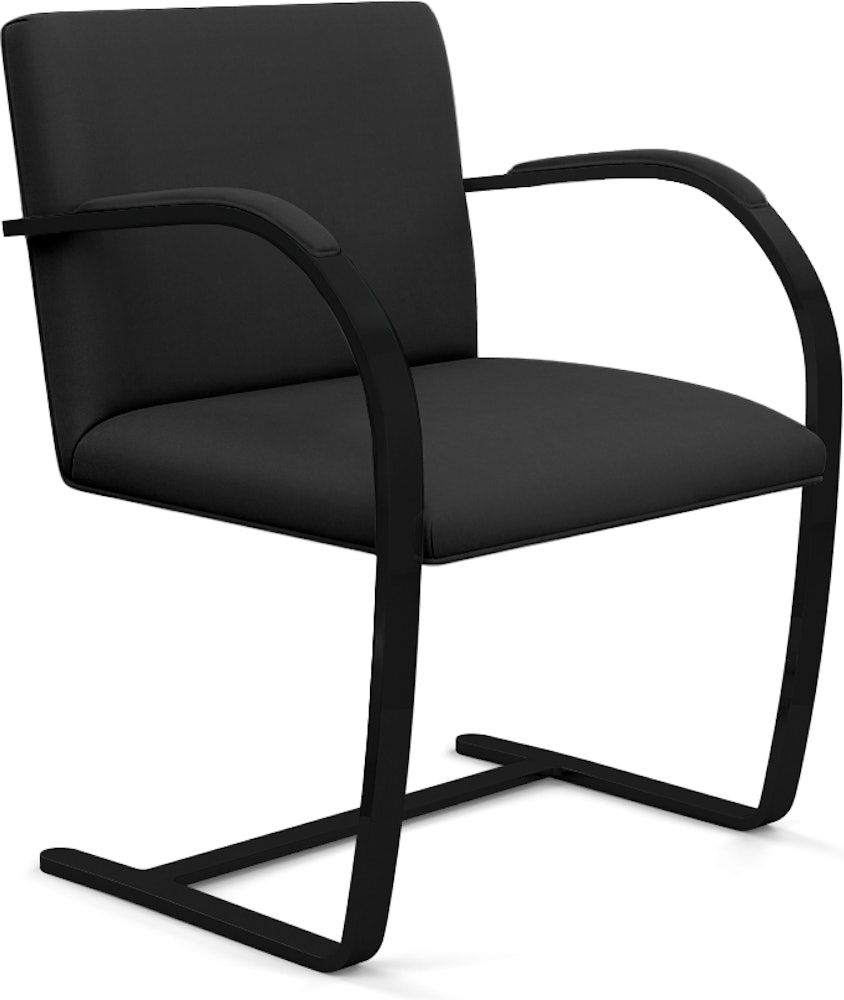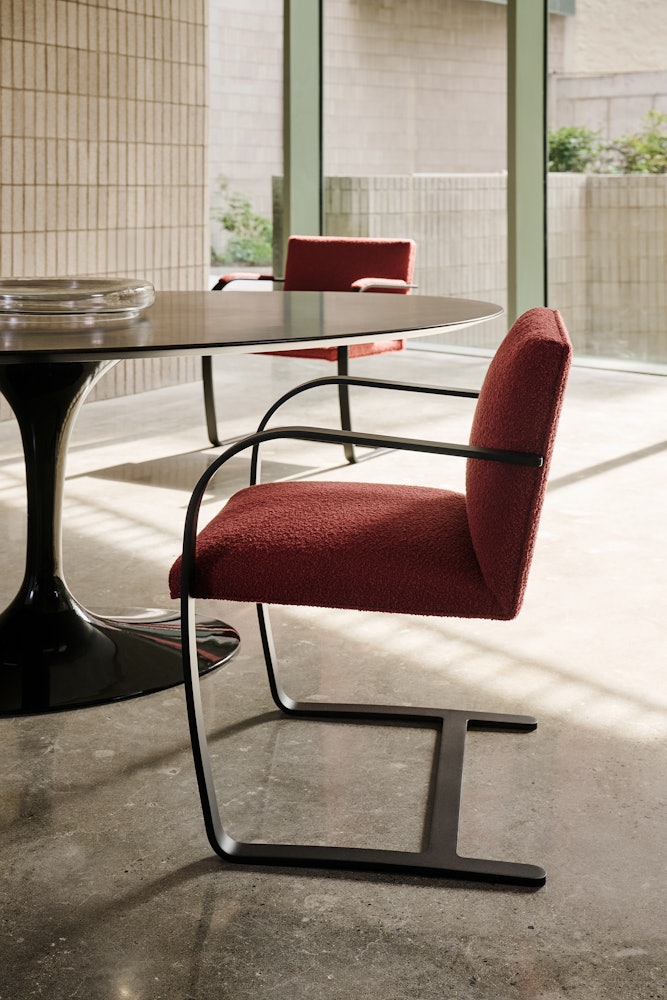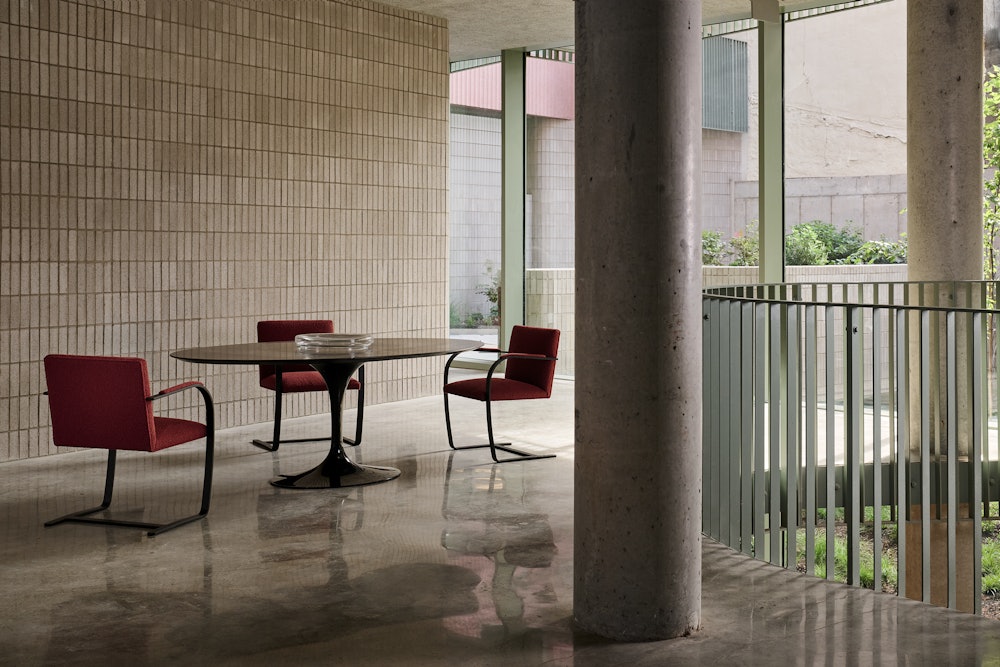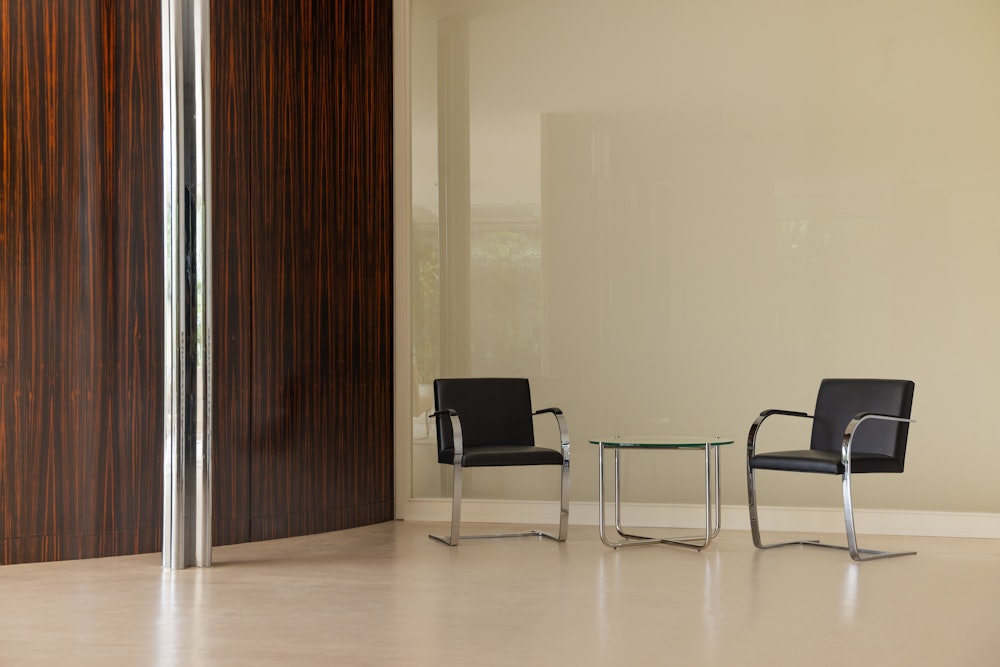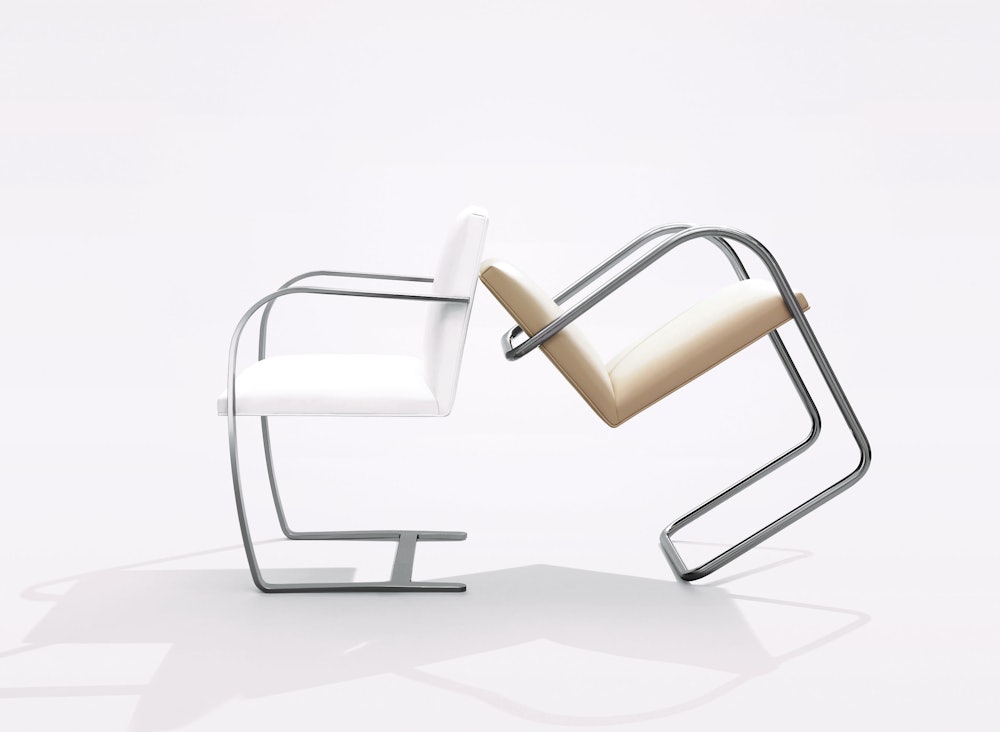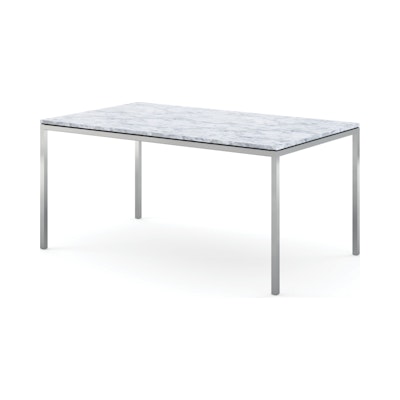Shipping + Delivery
Authenticity Guaranteed
This is an original, authentic Knoll product.
Complimentary Design Services
Transform your space with advice from our Design Specialists, included without charge. Get in touch
Warranty
5-year warranty
Terms and conditions apply. Learn more
You May Also Need
Item Number:100203700
- Cantilevered seat bounces slightly with the sitter.
- Available with or without armpads.
- Frame offered in a choice of finishes.
- No visible connections between seat and frame.
- Upholstered in fabric or leather.
- An Original Ludwig Mies van der Rohe Design.
- Designer
- Ludwig Mies van der Rohe
- Collection
- Brno Collection
- General Dimensions
-
- 31½" H 22¾" W 22½" D
- Product Weight
- 38 lbs
- Assembly
- Comes fully assembled
- Warranty
-
5-year warranty
Terms and conditions apply. Learn more
- Item No.
- 100701013

With Armpads
- Height (in): 31½
- Width (in): 22¾
- Depth (in): 22½
- Weight (lbs): 38
- Seat Height (in): 17½
- Arm Height (in): 25¾
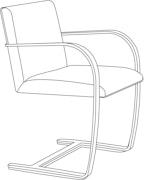
Without Armpads
- Height (in): 31½
- Width (in): 22¾
- Depth (in): 22½
- Weight (lbs): 38
- Seat Height (in): 17½
- Arm Height (in): 25¾
- Steel with polished chrome or powder-coated frame
- Seat has an inner hardwood frame cushioned with variable density foam
- Dymetrol® seat suspension
- Notification of Filling Contents
Shipping Options
- In-Home Delivery
Return Options

Ludwig Mies van der Rohe
A hugely influential figure in design history, Ludwig Mies van der Rohe brought a less-is-more approach to everything he designed, from furniture to skyscrapers. He taught at the Bauhaus and Illinois Institute of Technology (IIT), and was a trusted mentor to Florence Knoll. Mies’ buildings—including the Seagram Building, IIT Campus, and Farnsworth House—changed the face of American architecture.
More on Ludwig Mies van der Rohe







